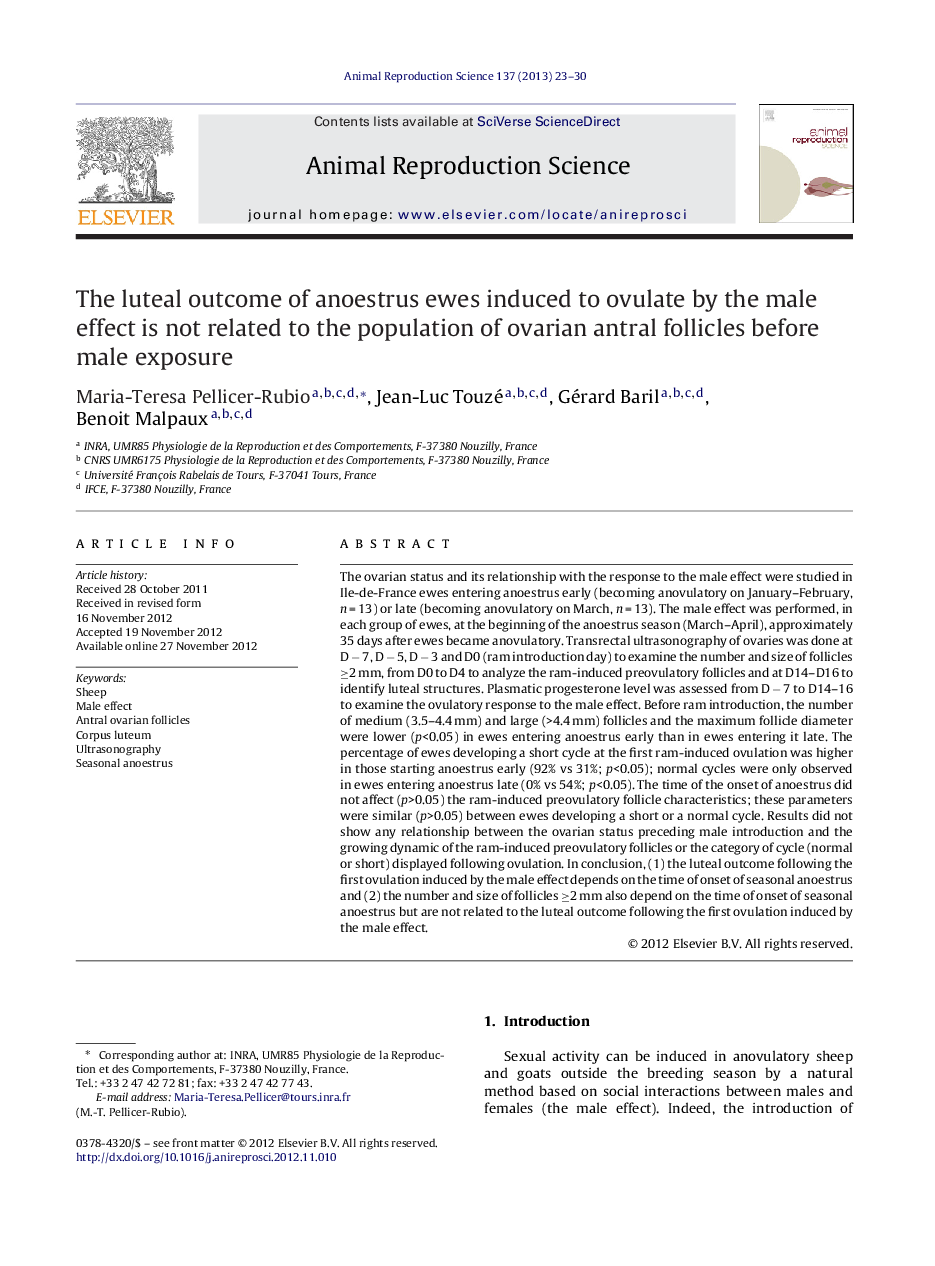| Article ID | Journal | Published Year | Pages | File Type |
|---|---|---|---|---|
| 2073055 | Animal Reproduction Science | 2013 | 8 Pages |
The ovarian status and its relationship with the response to the male effect were studied in Ile-de-France ewes entering anoestrus early (becoming anovulatory on January–February, n = 13) or late (becoming anovulatory on March, n = 13). The male effect was performed, in each group of ewes, at the beginning of the anoestrus season (March–April), approximately 35 days after ewes became anovulatory. Transrectal ultrasonography of ovaries was done at D − 7, D − 5, D − 3 and D0 (ram introduction day) to examine the number and size of follicles ≥2 mm, from D0 to D4 to analyze the ram-induced preovulatory follicles and at D14–D16 to identify luteal structures. Plasmatic progesterone level was assessed from D − 7 to D14–16 to examine the ovulatory response to the male effect. Before ram introduction, the number of medium (3.5–4.4 mm) and large (>4.4 mm) follicles and the maximum follicle diameter were lower (p<0.05) in ewes entering anoestrus early than in ewes entering it late. The percentage of ewes developing a short cycle at the first ram-induced ovulation was higher in those starting anoestrus early (92% vs 31%; p<0.05); normal cycles were only observed in ewes entering anoestrus late (0% vs 54%; p<0.05). The time of the onset of anoestrus did not affect (p>0.05) the ram-induced preovulatory follicle characteristics; these parameters were similar (p>0.05) between ewes developing a short or a normal cycle. Results did not show any relationship between the ovarian status preceding male introduction and the growing dynamic of the ram-induced preovulatory follicles or the category of cycle (normal or short) displayed following ovulation. In conclusion, (1) the luteal outcome following the first ovulation induced by the male effect depends on the time of onset of seasonal anoestrus and (2) the number and size of follicles ≥2 mm also depend on the time of onset of seasonal anoestrus but are not related to the luteal outcome following the first ovulation induced by the male effect.
